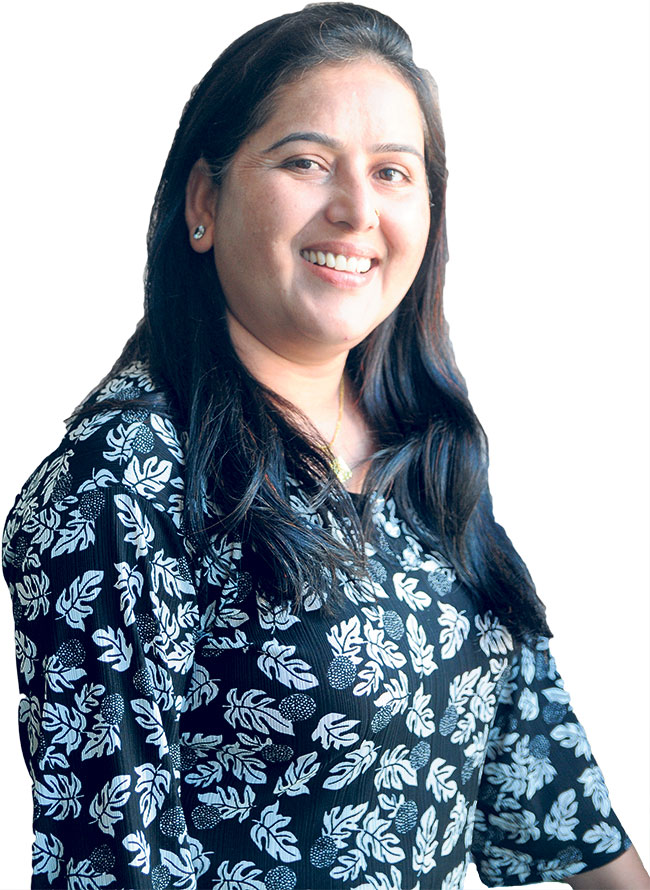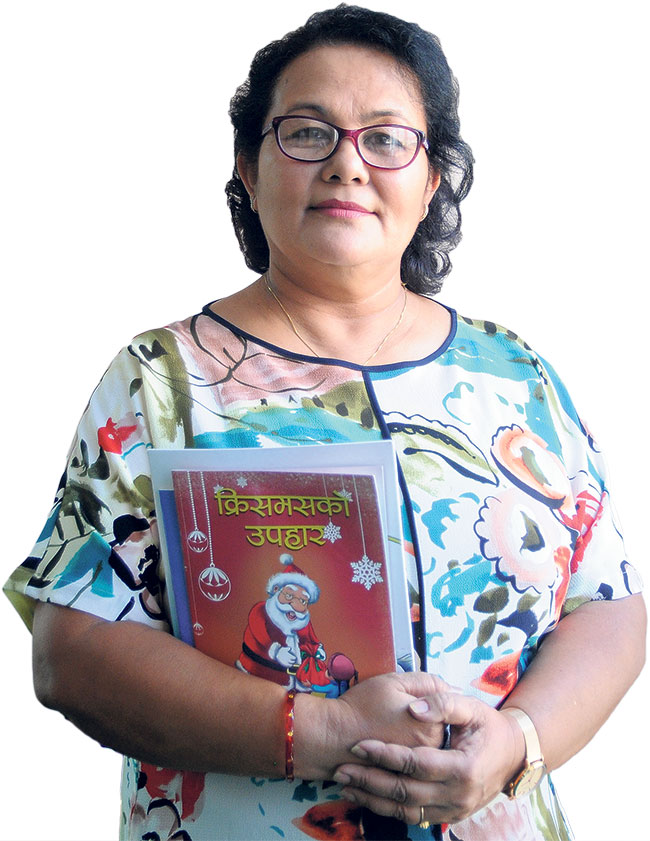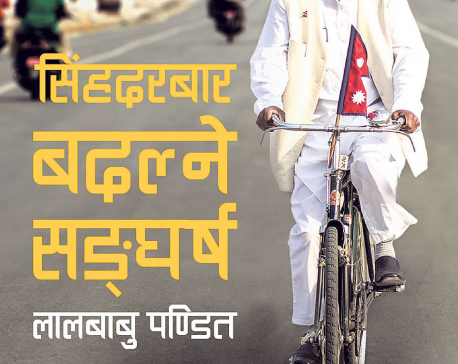
OR
books art music
From the desk of children's book writers
Published On: October 27, 2017 11:14 AM NPT By: The Week Bureau
The characters that we come across as kids almost always stay with us. Be it Hansel and Gretel, Cinderella or Red Riding Hood, we are not only familiar with their tales but we often remember these characters with great fondness. But, as Nepalis, it is also nice to know that now we have our own native characters to look forward to. While Nepali children literature is still in its infancy, there are writers who are making a lot of effort to help it grow.
The Week speaks to a few of them about their experiences and opinions regarding children’s books.
Shanta Dahal

As the production manager at Kathalaya, Dahal is surrounded by children’s books almost all day long, almost every single day. But she not only helps other writers hone their skills and publish their work, she has also built an admirable collection of her own.
Which phase do you enjoy the most when you are working on a book?
For me, it has to be the end. I regularly participate in storytelling programs as well and that moment when you can go out and share your story is my favorite part. There are always specific instances in a book that kids react to. When you are reading to them, you can almost sense it in the room. It’s something really special. I also like putting on voices, describing the characters and such. It’s really fun to have that experience with the kids.
How long do you take to finish working on a book?
The final product out of the printers might take from around six months to a year’s time. Personally, I like to take my time. I write, then I stow it away, take it out again after a while, reread and rewrite. I do this a couple of times. Then the next step is always sharing the stories with my family, friends and, of course, my children. When I feel like they enjoyed it, then it goes to the editor.
Since we only have part time editors, the editing process takes time. Sitting down with the illustrator is very important as well. I like to share my ideas and collaborate. You have to keep in mind the size of the books, the number of pages, and the pace of the storyline as well. There really is no detail that is too small. This easily takes a month. Then you proof read it, send it to designers and plate makers which will take another couple of months. It’s a long process.
There are more children books writers now than ever before but why haven’t they gained commercial success yet?
It all boils down to our reading culture and habit. We are not at a stage where a kid or even a parent goes out and says I want to read this. As writers, publishers, educators, we are still behind on this. So we are also trying to make families aware that they have to create an environment for their children to read at home. It’s not enough for classes to have reading corners. The children must develop this habit in their homes as well. Reading isn’t only for exams.
Parents’ awareness and participation are equally important. You can’t simply order your child to read while watching TV yourself. When we build on our reading culture, then only can we hope for commercial success. Until then, it’s a far-fetched dream, one that’s almost impossible.
Roshan Pokhrel
 Pokhrel works at a bank by day, but his spare time is often spent weaving tales for children. But he talks about how he had to grow up reading literature in Hindi. “Kids, back in my days, didn’t have stories written for them in Nepali,” he shares. So, according to him, this is his way of lending a hand in making sure kids today don’t have to suffer from lack of adventures, characters and plots in Nepali itself.
Pokhrel works at a bank by day, but his spare time is often spent weaving tales for children. But he talks about how he had to grow up reading literature in Hindi. “Kids, back in my days, didn’t have stories written for them in Nepali,” he shares. So, according to him, this is his way of lending a hand in making sure kids today don’t have to suffer from lack of adventures, characters and plots in Nepali itself.
In your experience, how has writing for kids been different from writing for adults?
There are many technicalities that you have to be wary of while writing for kids. People underestimate children’s books because they are small and thin but this means you basically have to find a way to summarize the story that is playing in your head. Also, you have limited words at your disposal. You have to make sure the kids can pronounce and understand the words you choose.
Then there is the impression that your story leaves. You have to shoulder this responsibility. You can’t be too careless with it. So if you are doing it properly, writing for children is always a lot trickier that it seems.
Do you feel like you have to adapt your plots to the new generation of kids?
That’s definitely the case as it’s difficult to engage kids today with the same stories that we were once told when we were kids. We read about Gurukul, of Kings and Sages but today kids are more into science fiction, adventure, and fantasy. So you have to be up to date and be able to captivate them by your plots.
Having said that, my next book is largely based on my own childhood. Reminiscing about it and drawing inspiration from it was an incredibly fun process. 90 percent of the storylines, starting from the characters to their shenanigans, were inspired from my own younger days. We took this book and did a survey in schools. The feedback we got from the students was positive so I guess there are things that children belonging to different generations can relate to as well.
Some may presume that women writers can understand and appeal to children better. What are you views on this?
Male and female writers may have different approaches when they write children’s books. There is a possibility that they might present their characters and plot in a different light but that just adds to the diversity of literature. Some women writers may have different experiences and understanding of children then male writers, but I don’t think that means male writers can’t evoke the same sentiments. I think all those interested can create good work from where they stand, irrespective of their gender.
Roma Pradhan
 After several decades’ worth of teaching experience, Pradhan says it was only natural for her to start writing children’s literature. She still runs a primary day center for young children and more often than not, they are the first to hear her stories. She believes having a library alone isn’t enough; one needs to learn how to use it as well.
After several decades’ worth of teaching experience, Pradhan says it was only natural for her to start writing children’s literature. She still runs a primary day center for young children and more often than not, they are the first to hear her stories. She believes having a library alone isn’t enough; one needs to learn how to use it as well.
Can you elaborate how your teaching career has helped your writing career?
If anything I find myself motivated to address issues that young children and even their parents face on a day-to-day basis. Kids really enjoy seeing themselves being reflected in stories so whether it is about characters who hate vegetables or feel the intensity of their sibling rivalry, they engage, they read, they listen. So I usually write about these little things that make up such a big part of their present. Being a teacher allows me to get up close and personal with their interests as well as problems. I really enjoy addressing them in my stories.
What do you think is the best way to use these stories and books to teach kids?
During our trainings, as a writer, we were taught never to spell out morals of any stories. It might sound counterproductive but,
in my experience, that really helps. When I write I never point out the lessons you have learnt from the stories. It’s best to leave it to the children to figure that out for themselves. It helps them analyze and think for themselves.
Also, I really enjoy putting down activities for them to do after they have finished reading the book. It’s a way to engage the children with the stories that they have read. I often do this in our classes as well. This always helps make a lasting impression.
What would you say is the one thing that a children’s book writer shouldn’t do?
You have to be mindful of the kind of stories you put in a children’s book. Even these days, there are stories where you have the mean and abusive stepmother.
After the earthquake, I had even read a story of a kid who loses her younger brother to the natural disaster. Personally, I don’t see the point of this. What would you want to make the child sad?
The idea of writing children’s books is to primarily expand children’s imaginations and help them improve their language. We should write descriptive, creative stories that immerse the child in a creative world.
If you are not helping with that, focusing on the negative things doesn’t make any sense. When it comes to writing for children, I think we need to tell stories that are positive and uplifting.
You May Like This

Let’s talk about books
As readers, we’re always in search of new book recommendations. But for some reason, getting random recommendations from just about... Read More...

Gazprom’s Footballs for Friendship International Children’s Project debuts in Nepal
KATHMANDU, April 3: Gazprom, official partner of FIFA and the 2018 FIFA World Cup, announced the opening of the Sixth Season... Read More...

Lal Babu Pandit’s life story now in a book
Publication Nepalaya is set to present its readers with yet another important personality of Nepal’s modern history. An autobiography of... Read More...









Just In
- Light rainfall likely in hilly areas of Koshi, Bagmati, Gandaki and Karnali provinces
- Customs revenue collection surpasses target at Tatopani border, Falls behind at Rasuwagadhi border in Q3
- Rain shocks: On the monsoon in 2024
- Govt receives 1,658 proposals for startup loans; Minimum of 50 points required for eligibility
- Unified Socialist leader Sodari appointed Sudurpaschim CM
- One Nepali dies in UAE flood
- Madhesh Province CM Yadav expands cabinet
- 12-hour OPD service at Damauli Hospital from Thursday










Leave A Comment